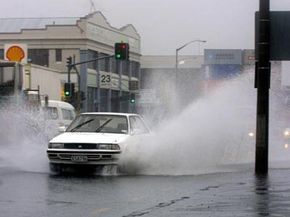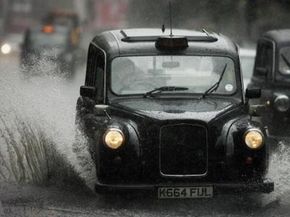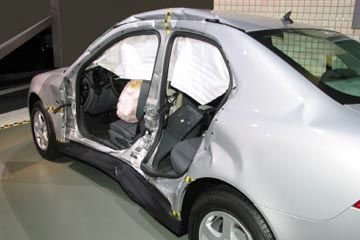You're cruising down the interstate, listening to the morning radio show and thinking about everything you have to do when you arrive at work. The presentation that's due next week is on your mind, along with the fact that you haven't even started on it. Your boss is also breathing down your neck. On top of everything else, it's raining. It's nothing much, but it's enough to keep you from making your daily lunchtime escape to the park. As your mind wanders somewhere else, you drive your car through a deep patch of water. One second you're singing along with the radio, the next you're hurtling out of control into the next lane. Fortunately, traffic's not too heavy. You didn't hit anyone, but the experience shakes you up and, for the moment, clears your mind of your other worries. At a more moderate speed, you make your way to the office, vowing to take driving in the rain more seriously in the future.
You've just undergone the potentially dangerous experience of hydroplaning. Hydroplaning occurs when a sheet of water comes between the vehicle's tire and the pavement. The tire, because of wear or poor drainage on the road, can't move water out of the way fast enough. The rubber doesn't touch the road, the vehicle loses traction and the driver loses control of steering. Some people liken it to sliding on a sheet of ice. Braking or steering can't help, because the vehicle's tires aren't in contact with the road. Hydroplaning can occur with any type of vehicle. The water depth must be over a tenth of an inch (0.3 centimeters) for hydroplaning to occur, and the vehicle's speed needs to be 50 miles per hour (22.35 meters per second) or more.
Advertisement
Hydroplaning is a common cause of accidents, and tire manufacturers are continually coming up with new tread designs that attempt to channel water away and make a path for the tire. Engineers are working on new materials and new highway designs to lessen the chances of hydroplaning.



